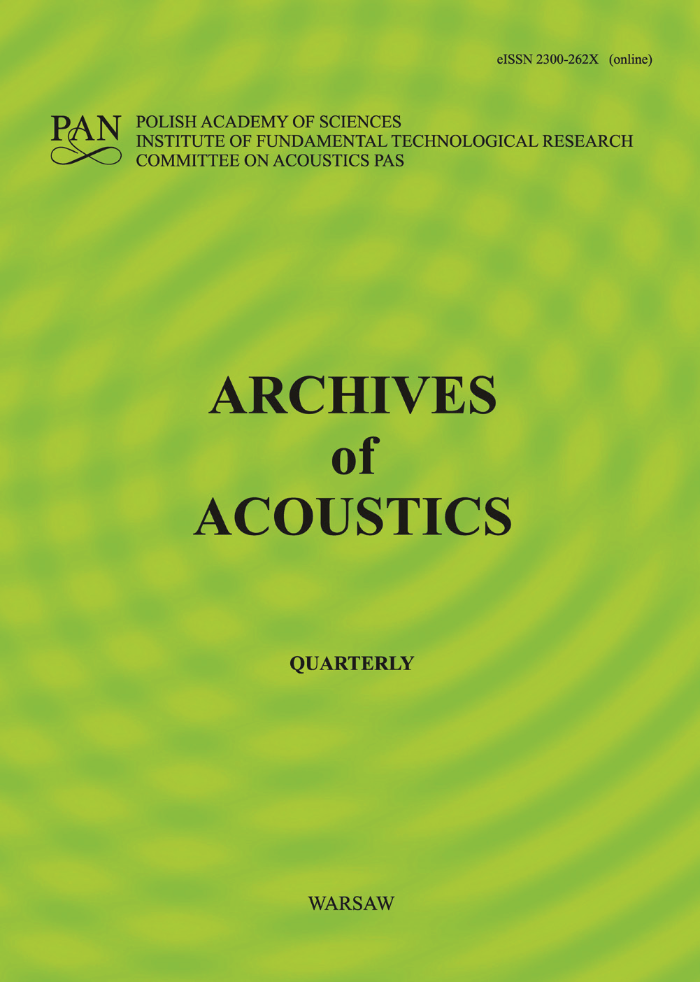Abstract
The hulls of naval ships are exposed to forces and moments coming from internal and external sources. Usually, these are interactions that can be described mathematically by harmonic and polyharmonic functions. The shock of UNDEX type (underwater explosion) works completely differently and its time waveform is difficult to describe with mathematical functions as pressure vs. time. The paper presents a simplification of physical and mathematical models of 1-D kickoff pressure whose aim is performance the simulation of the external force of the detonation wave. The proposed models were verified and tuned on naval, sea trials. The main goals of the proposed models are to perform simulation calculations of the detonation pressure for different explosion charge weights from different distances of the UNDEX epicentre for the design process of machine foundation. The effects of pressure are transformed as impulses exposed on shock absorber mounted at light shock machine.Keywords:
UNDEX, simulation, impact model, bubbleReferences
1. An F.J., Li X., Liu J., Wu C. (2018), Study of explosion loads of near-field underwater explosion, International Journal of Multiphysics, 12(2): 117–130, https://doi.org/10.21152/1750-9548.12.2.117.
2. Brett J.M. (1998), Numerical modelling of shock wave and pressure pulse generation by underwater explosion, DSTO Aeronautical and Marine Research Laboratory PO Box 4331, Melbourne, Australia.
3. Cole R.H. (1948), Underwater explosions, Princeton University Press, Princeton, https://doi.org/10.5962/bhl.title. 48411.
4. Dunbar T.E. (2009), Modelling of close-proximity underwater explosion loads and structural response, Defence R&D Canada – Atlantic, DRDC Atlantic CR 2008-272.
5. Grzadziela A. (2011), Ship impact modelling of underwater explosion, Journal of KONES Powertrain and Transport, 18(2): 145–152.
6. Huang H., Jiao Q.J. Nie J.X., Qin J.F. (2011), Numerical modelling of underwater explosion by onedimensional ANSYS-AUTODYN, Journal of Energetic Materials, 29(4): 292–325, https://doi.org/10.1080/07370652. 2010.527898.
7. Mair H.U. (1996), Preliminary compilation of underwater explosion benchmarks, Proceedings of the 67th Shock and Vibration Symposium, Volume I, SAVIAC, pp. 361–379.
8. Smith M.J., Lee J.J. (2017), Ship-like target design for underwater explosion experiments, Defence Research and Development Canada, Scientific Report, DRDCRDDC-2017-R096, September 2017, https://cradpdf. drdc-rddc.gc.ca/PDFS/unc284/p805694_A1b.pdf.
2. Brett J.M. (1998), Numerical modelling of shock wave and pressure pulse generation by underwater explosion, DSTO Aeronautical and Marine Research Laboratory PO Box 4331, Melbourne, Australia.
3. Cole R.H. (1948), Underwater explosions, Princeton University Press, Princeton, https://doi.org/10.5962/bhl.title. 48411.
4. Dunbar T.E. (2009), Modelling of close-proximity underwater explosion loads and structural response, Defence R&D Canada – Atlantic, DRDC Atlantic CR 2008-272.
5. Grzadziela A. (2011), Ship impact modelling of underwater explosion, Journal of KONES Powertrain and Transport, 18(2): 145–152.
6. Huang H., Jiao Q.J. Nie J.X., Qin J.F. (2011), Numerical modelling of underwater explosion by onedimensional ANSYS-AUTODYN, Journal of Energetic Materials, 29(4): 292–325, https://doi.org/10.1080/07370652. 2010.527898.
7. Mair H.U. (1996), Preliminary compilation of underwater explosion benchmarks, Proceedings of the 67th Shock and Vibration Symposium, Volume I, SAVIAC, pp. 361–379.
8. Smith M.J., Lee J.J. (2017), Ship-like target design for underwater explosion experiments, Defence Research and Development Canada, Scientific Report, DRDCRDDC-2017-R096, September 2017, https://cradpdf. drdc-rddc.gc.ca/PDFS/unc284/p805694_A1b.pdf.







